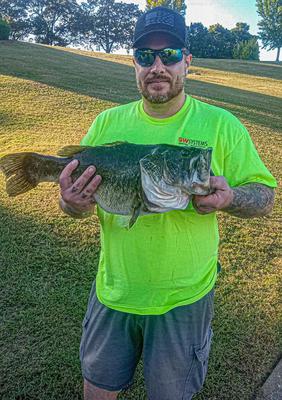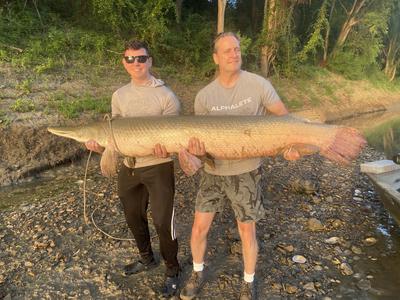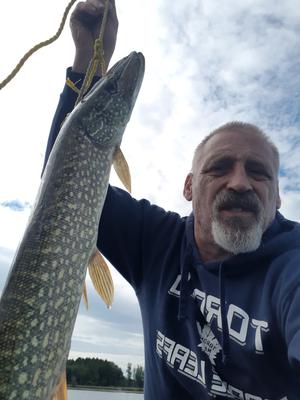Freshwater Fishing Techniques
When, Where And How To Fish For...
Anxious to hit the water? Of course.
Yet, I'm certain you'd like to gather some deadly freshwater fishing techniques and sick ass tactics to start catching a ton of fish, right?
Well, the different angling techniques for freshwater fishing depends on the species of fish that you will be wanting to catch. It also depends on if you're going to your favorite lake, pond or river, as well as certain conditions along with a few other factors.
Yeah sure, you can just simply rig up a hook, line and sinker with a worm, and toss it out into the water and hope for the best. But to become a much more successful fisherman or fisherwoman, it's better to use specified fishing techniques that target a specific species of fish.

Well, what species of fish do you plan on fishing for? Will it be those hard fighting largemouth bass, some bull dogging catfish, or how about some tasty panfish?...
Fishing Techniques
Hook, Line & Sinker
The most common technique is the classic way of fishing with a rod and reel baited up with a worm or some other type of bait. This can be tossed out into the water with a bobber to allow the bait to suspend near the surface of the water.
Or disregard the bobber and add a sinker to get the bait to rest at the bottom. Add a slider to allow the fish to pick up the bait and run with it with minimal resistance.
The old school way of fishing this way is with some string tied to a stick, along with some type of a make shift hook and hand caught bait.
Net Fishing
Some anglers prefer using a net to catch their fish. The net usually contains weights around the edges to help get it spread out when thrown out into the water. When pulled in the net closes up and traps the fish preventing them from escaping.
This technique is used by commercial fishermen, bait fishing, and in countries where fishing this way isn't regulated. Most places require a special license to be allowed to take fish in this manner.
Handfishing
Some states in the United States allow anglers to catch fish with their bare hands. This technique is most commonly known for catching huge catfish, and referred to being called grabbling, okie fishing, and noodling. For more information about this, get started with our catfish noodling section.
Juggin'
Fishing line or string is tied around a jug with a baited hook at the other end, and then tossed into the water. When a fish takes the bait it swims off. The fish eventually tires out from fighting the resistance of the jug in the water. Follow and find the jug floating on top of the water and check to see if you still have one on.
Again, this is another tactic that is not legal everywhere.
Spear Fishing
This is another form of fishing that is not legal everywhere.
Basically, a spear is thrusted hard into the water directly at the fish in hopes of penetrating it.
Alternatively, a bow and arrow can be used as well. The arrow usually contains a rope of sorts that the angler holds onto so that the fish aren't able to swim off with it. The rope also comes in handy when you've missed your target and need to retrieve the arrow.
Trolling
Trolling is a very popular technique. This is done by slowly and quietly cruising along in a boat with your fishing pole rigged up with either baits or lures. Special trolling motors are used to provide a quiet and smooth ride to help prevent spooking the fish.
Artificial Lures
There is a wide variety of techniques used with artificial baits. Some of the most common and popular methods include flipping and pitching, cranking, dead sticking, and drop shot. Because there are too many to list, and I could go on forever providing tips for each one, it would be best to refer to our navigational links to locate the species of fish that you plan to target.
Techniques For Freshwater Fishing Pages
Here are some links to a few of our targeted pages to help you get started. They go directly to the fishing technique driven pages or similar pages that provide related tips. You'll also find additional helpful information throughout their corresponding pages as well, such as cool tricks and hard nosed tactics.






Facebook Comments
Leave a comment, question or tip in the box below.